 W
WElse Alfelt was a Danish artist who specialized in abstract paintings. She was one of two female members of the CoBrA movement. She was married to Carl-Henning Pedersen, another prominent CoBrA member.
 W
WAnna Ancher was a Danish artist associated with the Skagen Painters, an artist colony on the northern point of Jutland, Denmark. She is considered to be one of Denmark's greatest visual artists.
 W
WHelga Cathrine Ancher (1883–1964) was a Danish painter. As the daughter of Anna and Michael Ancher, she was closely associated with the Skagen Painters. Most of her paintings were of her family and friends in Skagen and of local landscapes.
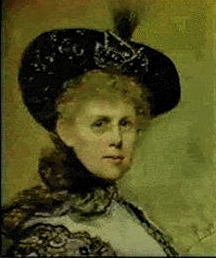 W
WCatherine (Cathinca) Caroline Engelhart Amyot (1845–1926) was a Danish painter who specialized in portraits and genre works. She travelled widely, creating a number of works of historical interest. In 1869 she began exhibiting in Düsseldorf and Copenhagen. After marrying the English physician, Thomas Amyon, from 1879 to 1890 she exhibited frequently in the Paris Salon and in London's Royal Academy of Arts.
 W
WMarie Vilhelmine Bang, commonly known as Ville Bang, (1848–1932) was a Danish painter of portraits, landscapes and genre works. In 1888, together with 22 other women, she presented a petition to the parliament, calling for the Art Academy to be expanded to admit women. It led to the establishment of Kunstakademiets Kunstskole for Kvinder where in October 1888 she was one of the first students. Together with Augusta Paulli, she later opened an art school to prepare women for the Academy.
 W
WMagdalene Margrethe Bärens was a Danish artist. She was one of the first professional female artists in Denmark, and the first woman to be elected into the Royal Danish Academy of Fine Arts. She was a flower- and still-life painter.
 W
WAnthonie Eleonore Christensen, generally known as Anthonore Christensen, née Tscherning (1849–1926) was a Danish flower painter. She exhibited from 1867 at Charlottenborg, winning the medal of the year in 1893. As a painting teacher, her students included Queen Louise and Queen Olga of Greece.
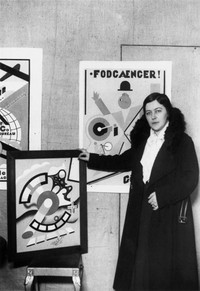 W
WFranciska Clausen was a Danish painter.
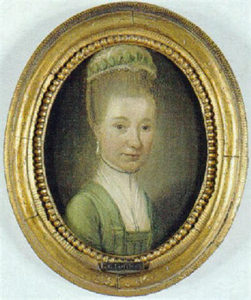 W
WMarie Jeanne Clemens was a French-Danish artist; engraver and pastell painter.
 W
WAugusta Dohlmann also known as Henriette Augusta Johanne Dohlmann (1847–1914) was a Danish painter. She was known for her flower painting.
 W
WBertha Olga Vilhelmine Herlich Dorph née Green was a Danish painter.
 W
WMaja Lisa Engelhardt is a Danish painter whose works are inspired by the landscapes of north-western Zealand where she was brought up. She now lives in Paris with her husband Peter Brandes who is also a painter. She has decorated several central buildings in Copenhagen and, more recently, has designed works for Danish churches.
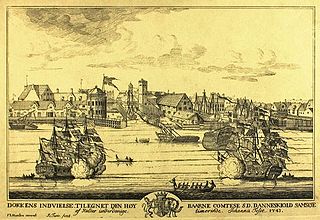 W
WJohanna Marie Fosie was a Danish painter, the first professional native female artist in Denmark.
 W
WEsther Gehlin née Henriques (1892–1949) was a Danish-Swedish painter of Jewish descent whose water colours and oils include still lifes, interiors, portraits and landscapes. From 1922, she and her artist husband Hugo Gehlin settled in the Swedish town of Helsingborg where local artists and writers frequently gathered in their home. In the 1940s, she created textile appliqués inspired by early Christian art.
 W
WHenriette Christine Hahn-Brinckmann (1862–1934) was a Danish-German painter and lithographer. Among her most interesting works are those created with Japanese woodcutting tools which her husband, the museum curator Justus Brinckmann, brought to Hamburg.
 W
WInger Frimann Hanmann was a Danish artist, specializing in painting and enamelwork. Her younger daughter Charlotte Hanmann is also a photographer, painter and graphic artist. Inger Hanman's best known enamel art works are displayed in Copenhagen Airport and Danske Bank.
 W
WEmilie Demant Hatt was a Danish artist, writer, ethnographer, and folklorist. Her area and of interest and expertise was the culture and way of life of Sámi people.
 W
WMarie Henriques was a Danish painter who created landscapes, figure paintings and portraits, initially in the Realist style but increasingly under the influence of Impressionism. She also painted watercolours of ancient architecture and sculpture. In 1916, she was a founding member of the Society of Women Artists .
 W
WAstrid Valborg Holm (1876–1937) was a Danish painter and textile artist. She was one of only two Danes who studied under Henri Matisse in Paris.
 W
WSophie Holten (1858–1930) was a Danish painter who created portraits, flower paintings and genre works. She is remembered in particular for her portraits of August Strindberg and L. A. Ring. She was also active in social work and feminism.
 W
WSuzette Catherine Holten was a Danish painter and ceramist who belonged to the Skovgaard family of artists. In addition to landscapes, flower paintings and portraits, she created and decorated ceramics and also worked as an embroiderer. As a woman, she was unable to achieve the same level of success as her father or brothers.
 W
WLucia Maria Ingemann was a Danish painter who is best known for her large altarpieces depicting biblical figures, many of which are displayed in Denmark's churches.
 W
WAnna Maria Elisabeth Lisinska Jerichau-Baumann was a Polish-Danish painter. She was married to the sculptor Jens Adolf Jerichau.
 W
WBodil Marie Kaalund-Jørgensen (1930–2016) was an award-winning Danish painter, textile artist and writer, who is remembered above all for her artwork in Danish churches and for her Bible illustrations. She was also a major contributor to the recognition of Greenland's cultural heritage, thanks in part to her Grønlands Kunst, published in English in 1983 as The Art of Greenland.
 W
WHelvig Agnete Kinch née Amsinck (1872–1956) was a Danish artist who specialized in painting animals, especially horses. In the early 20th-century, she participated in archaeological research near Lindos on the island of Rhodes, creating landscapes of the area and illustrating the artefacts discovered there. Together with Marie Henriques, in 1916 she established the Danish Society of Female Artists to encourage women artists to exhibit their works.
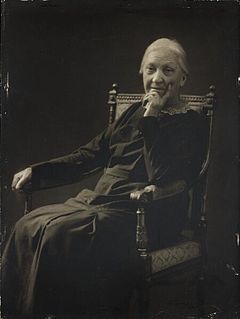 W
WElise Konstantin-Hansen (1858–1946) was a Danish painter and ceramist. She developed her own naturalistic style, often painting sea birds, animals, plants and beach scenes.
 W
WCharlotte Sofie Christiane Rosine von Krogh (1827–1913) was a Danish painter who studied in Denmark and Germany. She first exhibited in Kiel in 1857. Painting both landscapes and interiors, she depicted scenes in and around Haderslev and on the island of Fanø. Her works can be seen in the collections of museums in Southern Jutland and Flensborg and in Gottorf Castle.
 W
WMarie Triepcke Krøyer Alfvén commonly known as Marie Krøyer, was a Danish painter. She is remembered principally as the wife of Peder Severin Krøyer, one of the most successful members of the artists' colony known as the Skagen Painters, which flourished at the end of the 19th century in the far north of Jutland. Marie was also a part of the small group of Danish painters in her own right. From an early age, Marie aspired to become an artist, and after training privately in Copenhagen she went to Paris to continue her studies.There she was educated in the principals of Naturalism, and was influenced greatly by the French Impressionists. It was there, in early 1889, that she met Krøyer, who immediately fell madly in love with her. Although he was sixteen years her senior, the couple married that summer and in 1891 settled in Skagen. Clearly inspired by Marie's beauty, Krøyer had ample opportunity to paint her portraits both indoors and outdoors, especially on the beach. Married life became more difficult as Krøyer experienced periods of mental illness from 1900, and Marie eventually began an affair with the Swedish composer Hugo Alfvén who had also been taken by her beauty. The couple had a child, Marie divorced Krøyer and moved to Sweden with Alfvén. They married in 1912, but marital problems once again resulted in divorce. Marie was reluctant to paint after meeting Krøyer, whom she looked up to as a far more competent artist, and she is remembered more as the subject of some of his best-known paintings than for her own work, although several of her pictures have recently attracted renewed interest. She is now also recognized for her significant contributions to design and architecture.
 W
WChristine Marie Løvmand was a Danish artist who specialized in paintings of flowers and still lifes. She was one of the few women at the time who gained recognition as a painter.
 W
WFanny Susanne Garde [1855–1928) was a Danish porcelain painter who worked for the Bing & Grøndahl porcelain factory from 1886. She began by decorating the company's Heron dinnerware set (Hejrestellet), which proved to be an award-winning success in underglaze painting. She went on to contribute many of her own designs, especially vases decorated with flowers or fruits, sometimes also working with crackle-glazed porcelain. She is remembered in particular for decorating Bing & Grøndahl's Seagull set (Mågestellet), featuring a white bird in a blue sky.
 W
WCaroline Emilie Mundt was a Danish painter, known for her portraits of children.
 W
WHermania Sigvardine Neergaard (1799–1875) was a Danish flower and still-life painter. A student of Frederik Christian Camradt (1762–1844), she exhibited her paintings in Charlottenborg where several were bought by the royal family.
 W
WVilhelmine "Ville" Jais Nielsen was a Danish painter and sculptor. She is remembered for the many portraits of women she painted while in Sweden during the Second World War, marked by strong brushstrokes and sensitive lighting effects. Her husband was the artidst Jais Nielsen.
 W
WAnna Sophie Lorenze Petersen was a Danish painter. Although she showed some promise as an artist, specifically in genre painting, she struggled to find a place in the male-dominated Danish art world of the late 19th and early 20th centuries. Her work fell out of fashion and she was largely forgotten until the end of the 20th century when the Hirschsprung Collection and Statens Museum for Kunst acquired some of her more important works.
 W
WBolette Cathrine Frederikke Puggaard née Hage (1798–1847) was a landscape painter, one of very few 19th-century Danish women whose art extended beyond flower paintings. She and her husband, the merchant and shipowner Hans Puggaard, are remembered for supporting many of the painters of the Danish Golden Age.
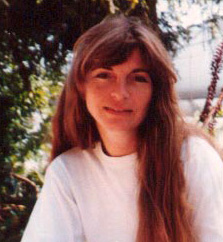 W
WPia Ranslet is a Danish painter and sculptor.
 W
WNaja Salto (1945–2016) was a Danish painter and textile artist who is remembered for her rich, brightly coloured tapestries, many depicting scenes of the sea and the sky.
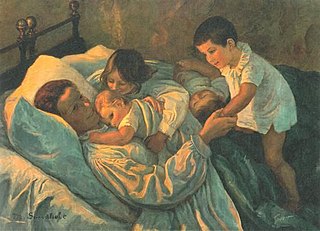 W
WAnna Marie Louise Sandholt (1872–1942) was a Danish painter and ceramist who practised outdoor painting at a time when it was unusual for women to do so. Before studying painting, she had been active as an embroidery teacher. As a ceramist, she created porcelain figures for Bing & Grøndahl. Many of her landscapes depicted trees, with which she developed a special relationship after the First World War.
 W
WAgnes Slott-Møller, née Rambusch, was a Danish Symbolist painter; influenced by the Pre-Raphaelites. She is known for works inspired by Danish history and folklore. Her husband was the painter Harald Slott-Møller.
 W
WNina Sten-Knudsen is a Danish painter who played a central role in the Danish Wild Youth trend in the 1980s. She gained recognition from her participation in the 1982 exhibition Kniven på hovedet held at Tranegården in Gentofte. More recently, her large landscapes raise existential questions of past and present, the merits of the modern world and the meaning of painting.
 W
WAnne Marie Frederikke Telmányi née Nielsen (1893–1983) was a Danish painter and writer. In addition to landscapes and mythological subjects, she is remembered in particular for her portraits of important figures of the times. Her writings include a biography of her mother, Anne Marie Carl-Nielsen, who was also an artist. Her father was the composer Carl Nielsen and husband was the Hungarian violinist Emil Telmányi.
 W
WLudovica Anine Vilhelmine Augusta Thornam was a Danish portrait and genre painter.
 W
WEleonora Christine Tscherning (1817–1890) was a Danish painter who created flower paintings and later landscapes, often working in the open air. She is also remembered as one of the most important memoirists of her day, writing letters and diaries documenting important events, including the career of her husband, Anton Frederik Tscherning (1795–1874) who served as a member of Parliament and the Council of State as well as Defence Minister.
 W
WSara Brigitte Ulrik née Tscherning was a Danish flower painter.
 W
WGerda Marie Fredrikke Wegener was a Danish illustrator and painter. Wegener is known for her fashion illustrations and later her paintings that pushed the boundaries of gender and love of her time. These works were classified as "lesbian erotica" at times and many were inspired by her partner, the transgender woman Lili Elbe. Wegener employed these works in the styles of Art Nouveau and later Art Deco.